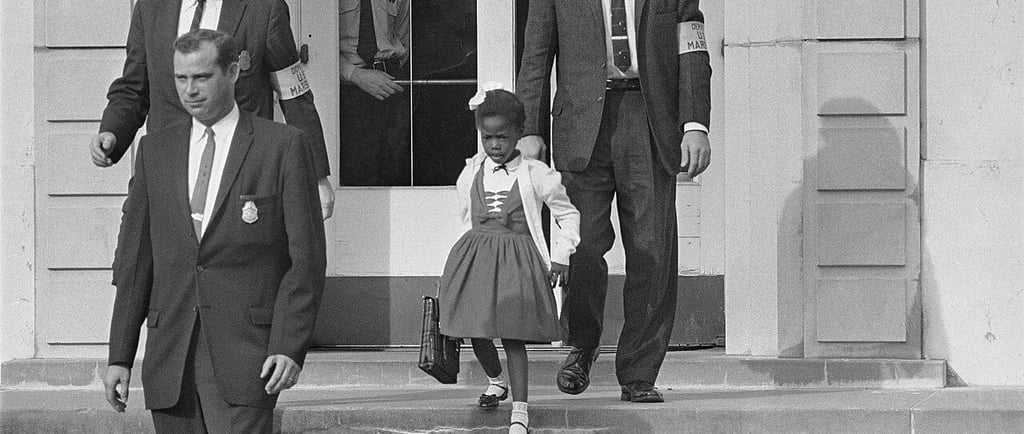Ruby Bridges Day: A Legacy of Strength and Courage
Ruby's courageous actions were not just about attending school; they symbolized the collective hopes of the Civil Rights Movement aiming to dismantle centuries of systemic racism. They encapsulated the broader struggle for equal rights and integration faced by African Americans across the nation.
11/15/20245 min read


The Historical Context of Ruby Bridges
Ruby Bridges was born on September 8, 1954, in Tylertown, Mississippi, during a time when racial segregation was an entrenched system in the United States. The landmark Supreme Court case Brown v. Board of Education in 1954 declared state laws establishing separate public schools for black and white students unconstitutional. However, this ruling was met with significant resistance, especially in Southern states, where the practice of segregation remained rampant. In New Orleans, the struggle for desegregation became particularly pronounced as the civil rights movement gained momentum throughout the late 1950s and early 1960s.
By 1960, despite the Supreme Court's ruling, many schools remained segregated, adhering to long-standing traditions and discriminatory laws. Ruby Bridges was one of the first African American children chosen to integrate a previously all-white elementary school, William Frantz Elementary School. Her enrollment on November 14, 1960, marked a pivotal moment in the fight against racial injustice. At just six years old, Ruby bravely navigated a hostile environment, confronted by crowds of protestors who vehemently opposed her attendance. This scene not only illustrated the societal divide of the time but also highlighted the fierce determination of individuals fighting for equality.
Ruby's courageous actions were not just about attending school; they symbolized the collective hopes of the Civil Rights Movement aiming to dismantle centuries of systemic racism. They encapsulated the broader struggle for equal rights and integration faced by African Americans across the nation. Ruby Bridges’ legacy serves as a testament to the power of courage and resilience in the face of adversity, positioning her within a crucial chapter of America's ongoing journey towards racial equality. Thus, Ruby stands as an inspirational figure whose story remains relevant in discussions about civil rights and social justice today.
Ruby Bridges: A Symbol of Courage
Ruby Bridges, an iconic figure in the civil rights movement, epitomized courage at a tender age. At just six years old, her decision to integrate William Frantz Elementary School in New Orleans in 1960 marked a pivotal moment in the fight against racism in America. The emotional and psychological challenges she faced during this experience were immense; Ruby was met with hostility and anger as she became the first African American child to attend an all-white school. Each day she walked to school, protected by federal marshals, her determination was unwavering, even in the face of adversity.
The iconic images captured during her solitary walks to school depict a young girl whose strength radiates against a backdrop of resistance. These images not only symbolize her individual bravery but also represent the broader struggle for civil rights. Her experiences were not just personal; they were emblematic of the systemic racism prevalent at the time. Ruby's journey showcases the immense psychological toll that such an endeavor can impose on a young child, navigating a hostile environment, and the potential long-term effects on mental health.
Support from family played a crucial role in Ruby's remarkable journey. Her parents, particularly her mother, instilled in her the values of courage and resilience, encouraging her to persevere in the face of adversity. This familial backing fortified her spirit, allowing her to confront and challenge societal norms from an early age. The legacy of Ruby Bridges extends beyond her childhood actions; she has become a powerful role model for generations. Her story illustrates the importance of standing up against injustice and the profound impact one individual can have in inspiring change. Ruby’s legacy continues to resonate, reminding us that courage is essential in the ongoing fight against racism.
The Impact of Ruby Bridges on Society
Ruby Bridges, an emblematic figure in the American civil rights movement, profoundly reshaped societal perceptions concerning race and educational equity. In 1960, at the tender age of six, she became the first African American student to attend an all-white elementary school in Louisiana. Her courageous act of enrollment at William Frantz Elementary School was not just a personal milestone; it served as a catalyst for significant changes in educational policy and the ongoing dialogues surrounding racial equality in the United States. Bridges' actions challenged existing segregation laws and highlighted the pressing need for reforms within the educational system.
The backlash that Ruby faced, including hostility and violence directed at her and her family, underscored the entrenched racism prevalent in society at the time. However, her resilience and determination in the face of adversity inspired countless individuals and mobilized activists to advocate for civil rights. Bridges’ story has since become a powerful symbol, reminding society of the ongoing struggle against discrimination and the importance of equitable education for all children, regardless of race.
Today, Ruby Bridges' legacy continues to influence contemporary education and civil rights discussions. Schools across the nation include her narrative as part of their curricula, emphasizing the significance of her experience in broader social justice movements. Educators utilize her story to teach students about the importance of courage, resilience, and the need to challenge injustices. This engagement in educational spaces fosters critical conversations about race, equity, and justice, empowering new generations to be advocates for change.
Thus, the impact of Ruby Bridges extends beyond her initial historic act; it permeates discussions surrounding educational reform and societal equity, making her a vital part of the American narrative that celebrates strength and courage in the face of inequality.
Honoring Ruby Bridges Day: Symbols of Change and Unity
Ruby Bridges Day serves as a powerful reminder of the ongoing struggle for civil rights and the need for unity in overcoming racial barriers. Celebrated on November 14, this day honors the courage of Ruby Bridges, who, as a six-year-old girl, became the first African American student to integrate an all-white elementary school in New Orleans in 1960. The observance of this day brings forth various activities aimed at fostering community solidarity and promoting tolerance among individuals of diverse backgrounds.
Communities across the nation participate in events that symbolize the values Ruby Bridges stood for. Educational initiatives in schools often focus on her story, using her experiences to teach students about the importance of respecting differences and advocating for equality. Activities can include storytelling sessions, art competitions, and discussions that encourage students to reflect on how they can contribute to a more inclusive society.
Many organizations also host community gatherings, workshops, and panel discussions that delve into the history of civil rights and contemporary issues surrounding racism and discrimination. These events provide a platform for individuals to share their experiences and strategies for promoting social justice. Participants are not only encouraged to listen but also to engage in conversations that can lead to actionable change within their communities.
In addition to formal events, Ruby Bridges Day calls upon all individuals to engage in their own acts of reflection and activism. This could involve simple gestures such as educating oneself about the history of civil rights or confronting instances of injustice in everyday interactions. By collectively remembering Ruby's legacy, society reinforces its commitment to advancing the principles of equality and respect, reminding us that the journey toward true unity continues to require our active participation.
